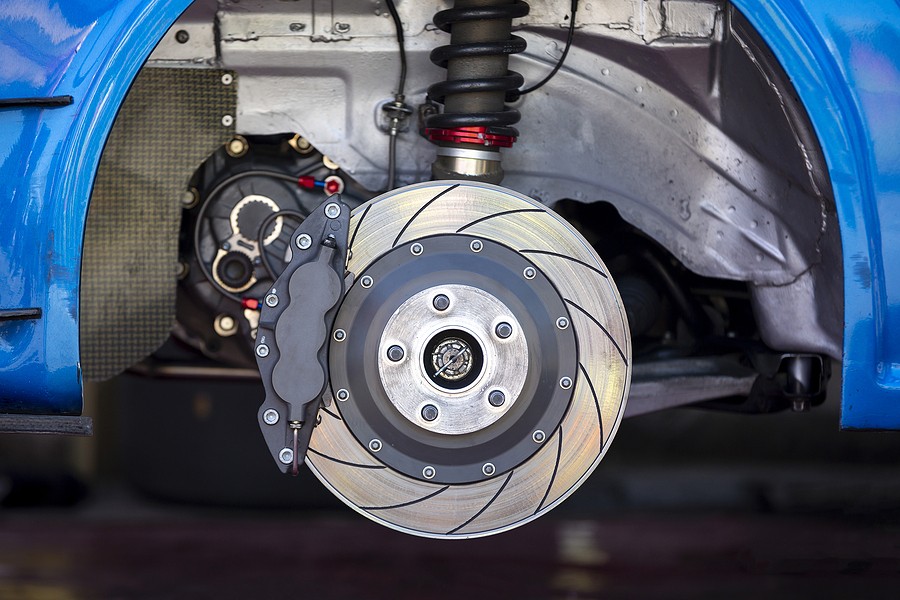While it is understandable for many car manufacturers to find affordable parts for their vehicles, this simply isn’t acceptable for many discerning consumers. While OEM brakes are good enough for typical daily driving to your office, school or to your local grocery store it can easily be overwhelmed if you have to drive to the extreme. Yes, it’s time for brake upgrade and in this article we will talk about performance brake upgrade tips. Think about using BBK or Big Brake Kit to make brake fade less of an issue. Choose the right brake upgrade according to your driving news, do not overdo your upgrades and spend more money than necessary. Also consider your tires when considering brake upgrades. All of these performance brake upgrade tips and more in this article.
How can I improve my brake performance?
Upgrading your OEM brakes to a higher performance brake not only extends the life of your brake system, but it also improves performance. It can improve your vehicle's safety by reducing stopping distance and assisting it in performing better under harsh conditions.
The factory brakes lose efficiency after a particular temperature and load amount. If you've ever driven down a steep mountain road, you've probably experienced this. You nearly have to stamp on the brake pedal to get the automobile to slow down or stop after a while. If you race, you'll need high-performance brakes.
Performance brake modifications are designed to dissipate heat faster than standard brakes. Shorter stopping distances aren't the only benefit of a brake improvement; it can also improve handling dynamics by decreasing weight, which helps the suspension to react more quickly to bumps in the road. Another advantage of a big-brake improvement is its appearance. Behind the correct set of wheels, drilled and slotted rotors and powder coated multi-piston calipers create a statement.
Here are a few Performance Brake Upgrade Tips:
- BBK Installation
The best and quickest approach to improve your vehicle's braking performance is to install big brake kits. With larger disc surfaces, heat takes longer to build up and the bigger surfaces also aid in speedier cooling. BBKs are also known for having vented and cross-drilled discs, both of which aid in cooling. Brake fading will be less of an issue if you've installed a BBK.
But there's one thing you should check before buying a huge brake upgrade kit or individual big brake parts. You must ensure that the kit is compatible with your current wheel size. Factory wheels frequently lack the clearance required for major braking improvements. The minimum wheel size will normally be specified on the package or description of the kit or upgraded, upsized rotor in question. The diameter of the rim alone is measured, not the combined diameter of the rim and tire.
You'll also want to double-check any issues with each major brake component, such as whether the rotor and caliper are compatible with anti-lock braking systems (if your vehicle has one). Is there adequate space between the caliper and the rim's backside? Can you use spacers if you don't have any? Is there a better-fitting kit for your vehicle on the market?
- Choose the right brake according to your needs.
You have two options for replacing these parts. You can either buy the OEM brakes or upgrade to a performance brake that outperforms the factory brakes. If you are only doing normal day to day driving then might as well stick to OEM brakes. They absorb less dust than standard semi-metallic brake pads, allow for softer, quieter braking, and perform well in both hot and cold weather. Most performance aftermarket pads produce more wear on your braking rotors.
But then again, OEM parts have noticeable longer stopping distances and wear out sooner than many ceramic brake pads. They can also give out a mushy feel on your brake pedal. So for people (and vehicles) who spend a lot of time on the dirt, off-roading, racing, or have any number of adventurous ideas for their ride, an OEM brake pad quietly and efficiently meeting the demands of your driving can be a tall order. Particularly because driving styles, usage patterns, and personal preferences are as diverse as the vehicles on the road. This is when the greatest aftermarket brake pads will make a significant difference in your vehicle's performance and safety.
Most cars have non-organic metallic (NOM) brake pads, although ceramic brake pads are the best on the market. Ceramics emit less dust and do not screech, as well as slowing down your car and wicking away heat faster. What's the harm in that? These characteristics guarantee that they persist longer and stop more effectively. Most people believe ceramic brake pads are prohibitively expensive, yet in most cases, they are not significantly more expensive than non-organic metallic brake pads.
Semi-metallic pads, on the other hand, come in a variety of compounds, and you'll want to be sure you choose the right one for your driving style. The temperature range is the first thing to consider: some metallic compounds can't work unless they've been warmed up to a specific operating temperature, which may not be practicable or even safe in street driving. Others provide a broader temperature range, balancing the necessity for both street and track stopping.
Other factors to consider with these pads include noise and dust, both of which can be significantly increased when compared to stock brake pads.
For street driving with the odd aggressive drive on winding country roads, a smooth or slotted rotor with performance pads is more than adequate. For a track-driven car or race car, a more durable kit is preferred. In ordinary driving, however, racing brake pads can “bite” so fiercely that they quickly wear down your rotors.
If you're stuck with rear drum brakes instead of the more effective disc brakes, you might be able to get a rear disc conversion kit for your car. You can use these kits to swap out your OEM drum brakes for disc brakes.
- Upgrade your tires as you upgrade your braking system
Without a set of high-performance tires, your car's braking performance won't be as good as it could be. It's not enough to install a BBK and braided brake lines on your vehicle. You'll need the right tyres to efficiently transfer all that braking power to the road.
The importance of high-performance tyres with sticky compounds and rigid sidewalls cannot be overstated. Your braking performance potential will be unrealized without these. Remember that your car's tyres are the only thing that connects it to the road. Any go-faster enhancements to your car will be useless if you don't have them.
Are high performance brakes worth it?
We have already discussed a few performance brake upgrade tips but are high performance brakes really worth it? As mentioned another one of performance brake upgrade tips is that you should never spend more than you need to.
In general, any car on the road might benefit from a brake system improvement. This isn't to argue that OEM brake systems are terrible (far from it; many of them are excellent), but rather that you can never have too good brakes. Still, that's not reason enough to do an upgrade. Your answer to the following questions will help you decide if high performance brakes are worth for you.
- Is it possible that your factory brakes are overheating?
You'll know because you'll smell them gassing – it's a distinct odor that you won't be able to ignore. If you're smelling hot brakes on a frequent basis, you're probably due for an upgrade.
- Are your stock brakes soon wearing out?
On a performance car, a decent set of OEM front brake pads should last a year or two, and on a regular car, they could last up to five years. If you're wearing out brake pads every few months and having to replace rotors every other time you buy pads, it's time to upgrade.
- Are you competing in a race?
If you plan on driving your car on a racetrack, you should consider upgrading your brakes.
- Have you improved the engine power of your vehicle by more than 20%?
If you've increased the power of your engine in any way, you should seriously consider upgrading your brakes.
If you answered no to all of these questions, you can probably stop now. You don't need to improve your brakes. However, if you've responded yes to even one of the questions, it's time to start thinking about upgrading.
There are numerous advantages to upgrading your brake pads to a performance formulation. The most significant advantage is that performance brake pads resist fade far better than ordinary brakes. Performance pads tend to cling better as they are hot, so you'll enjoy greater results at the track. However, there are certain disadvantages to using performance brake pads so you must weigh your options.
They must be ‘bed in' through a precise procedure. They will function poorly if they aren't likely bed-in following installation. The procedure is usually straightforward, but many people forget or are unaware that it is required.
When it's chilly, performance pads aren't particularly good (at least not all of them). When you upgrade to a performance compound, cold brake pads become an issue. While OEM brakes tend to grasp well first thing in the morning, a performance pad performs badly until it achieves a temperature of a few hundred degrees.
Performance brake pads, at least on the street, do not last as long as OEM brake pads. When utilized on the street, an OEM brake pad will last a long time. On a street car, if you replace an OEM pad with a performance pad, you'll probably need a new set of pads sooner than you think. Of course, you'll probably be able to stop sooner or later.
But here is another one of those performance brake upgrade tips — consider swapping brake pads as needed.
If you were considering a dual-use brake pad for street and track driving, the temperature ranges listed above should have piqued your interest. While the HP+ is safe to drive to your event and will perform well in competition, a dedicated race pad compound is not something that can be used safely on the street.
The simplest way to get the most out of your brake pad configuration is to replace pads once you're at the track, allowing you to maximize stopping power in both conditions. While carrying an extra set of pads may seem inconvenient, it's actually no different than having a competition tire strategy. It's no different from matching your brakes to the task at hand when it comes to tire compound. A one-size-fits-all approach is a fine place to start, but as you develop your talents, you'll find that you need to branch out.
Noise can be an issue with performance pads. You probably don't care if you go to the track every weekend. You might be disappointed if you install performance pads to a car that you expect to be whisper quiet.
How do I increase brake pressure?
The hydraulic force that actuates the braking system when the pedal is pressed is known as brake line pressure. It is the force applied to the brake pedal in pounds multiplied by the pedal ratio divided by the size of the master cylinder in square inches, measured in English terms as pounds per square inch (psi).
The smaller the master cylinder, the higher the brake line pressure for the same amount of force. Typical brake line pressures during a stop range from less than 800 psi in “normal” conditions to more than 2000 psi in extreme conditions. Only by increasing the mechanical pedal ratio or decreasing the master cylinder diameter will you be able to raise line pressure. The pedal travel will be increased in either situation.
You have many options for your performance brake upgrade but the most important tip is probably to make sure that you need one. Because at the end you may not need it and it might be best just to keep an OEM part.



